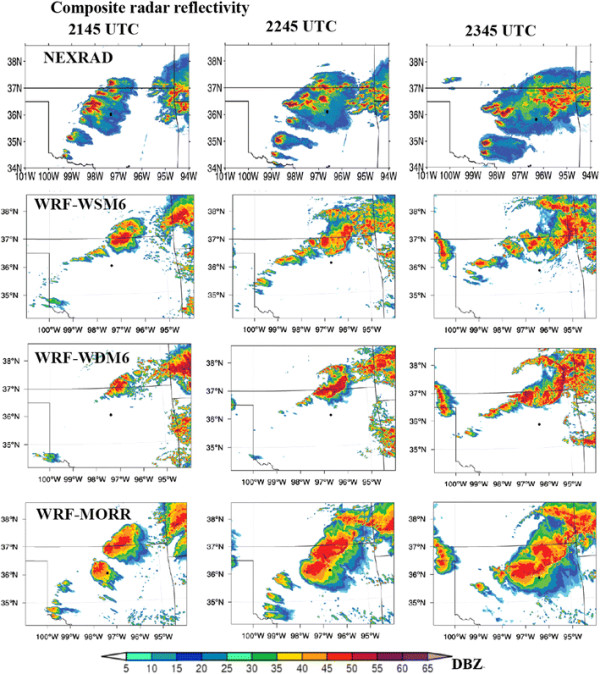Evaluation of Double-Moment Microphysical Parameterization with Observations during MC3E
Submitter:
Pu, Zhaoxia — University of Utah
Area of research:
Cloud Processes
Journal Reference:
Science
Microphysical parameterization (MP) is an important source of uncertainty in the numerical prediction of mesoscale convective systems (MCS). It has been recognized that different MP schemes can significantly influence the structure and evolution of an MCS in numerical simulations. Recent studies have suggested that numerical simulations with double-moment of warm-rain and ice schemes can better simulate stratiform precipitation and convection-induced cold pool characteristics. Other studies, however, have pointed out that using double-moment for rain only can produce the same results as using a full double-moment scheme. A major difference between partial and full double-moment schemes is the representation of ice species, and it is well known that the uncertainty in microphysics parameterizations arises mainly from the treatment of ice processes. For those reasons, the important question to ask is: “Are the full double-moment treatments of ice hydrometeors good enough in a current double-moment scheme, such as the Morrison scheme that was included in the mesoscale community Weather Research and Forecasting (WRF) model?” Because of the lack of data with detailed MCS cloud components, a detailed evaluation of double-moment schemes has not yet been undertaken.
During April and May of 2011, the Midlatitude Continental Convective Clouds Experiment (MC3E) field campaign collected an extensive data set for clouds, precipitation, and their properties and environmental conditions. Among the data collected during the MC3E campaign, the University of North Dakota Citation (UND-Citation) data set provides measurements of hydrometeor distributions with hydrometeor properties, such as ice particle number concentration in specific diameter bins and ice water content inferred from the particle distributions. These data offer an excellent opportunity to evaluate the performance of microphysical schemes in predicting microphysical properties.
A study has been conducted to compare results from Weather Research and Forecasting (WRF) model simulations with the UND-Citation data set to obtain insight regarding the representation of ice hydrometeor properties in a double-moment microphysical scheme.
Impact
The influence of double-moment representation of warm-rain and ice hydrometeors on the numerical simulations of a mesoscale convective system (MCS) occurring during the period of May 23-24, 2011, over the U.S. Southern Great Plains has been evaluated. The WRF model is used to simulate the MCS with three different microphysical schemes, including the WRF single-moment 6-class (WSM6), WRF double-moment 6-class (WDM6; double moment of warm rain only), and Morrison double-moment (MORR; double moment of both warm-rain and ice) schemes. We found that double-moment schemes outperform single-moment schemes in terms of the simulated structure, life cycle, cloud coverage, precipitation, and microphysical properties of the MCS.
However, compared with UND-Citation observations, collected during the MC3E field campaign, the WRF-simulated ice hydrometeors with all three schemes do not agree well with the observations. The reasons for the disagreements may be, but are not limited to, the following:
- the model did not reproduce convection structures exactly,
- errors in the aircraft measurements play an important role, and
- the aircraft data are too sparse to compare with the model, as the aircraft sampled only one point at each specific time.
Summary
Overall, results from this study suggest that uncertainty in microphysical schemes could still be a productive area of future research from perspective of both model improvements and observations.


